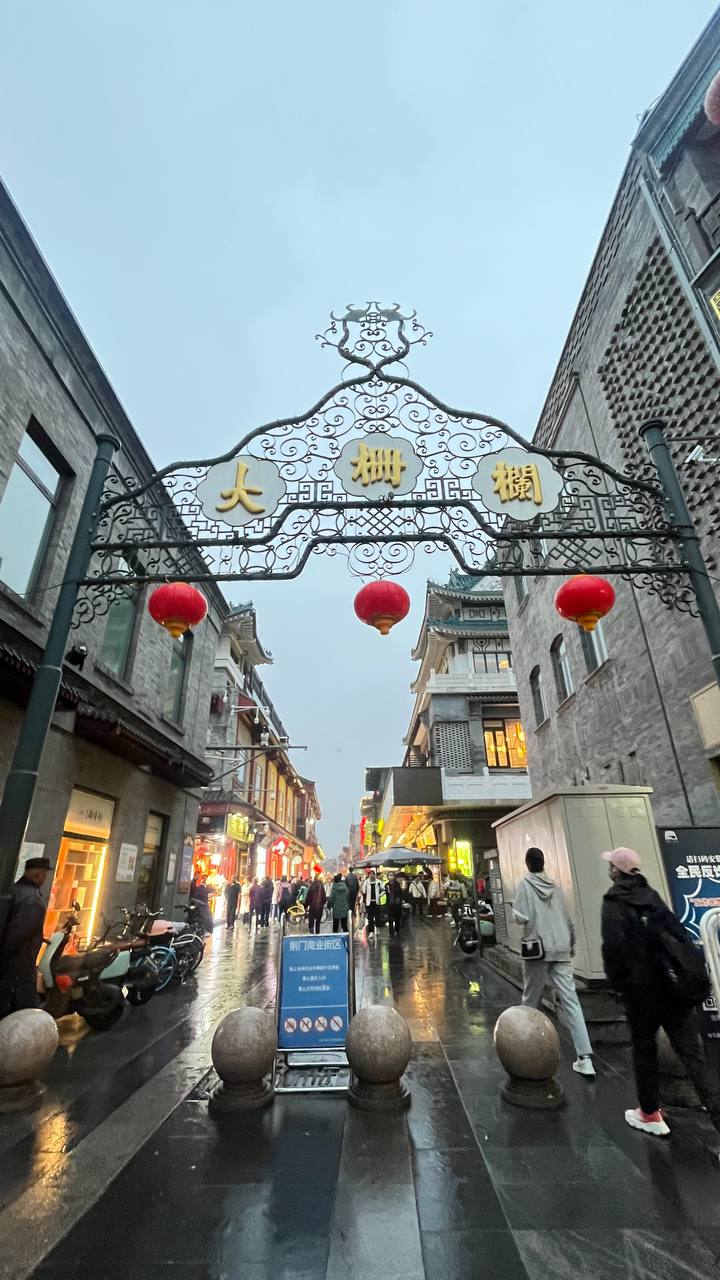Being of the main touristic areas of the capital of China you’d expect there to be a rich culinary scene. So, what is the Qianmen street food scene?
I was to check this out after over 10 years of not visiting the place as part of my almost 8000 km overland trip from Beijing.
What the Qianmen?
Qianmen has about 10,000 permanent residents and is located just spitting distance form Tiananmen Square and the Forbidden City. The later is of course famous for the Last Emperor having lived here while former is renowned for absolutely nothing happening there in 1989.
Qienman itself is known for Zhengyangmen, colloquially called Qianmen or the “front gate” of the old city wall of the historic city.


Modern Qianmen
I initially started hanging here in 2008 and at the birth of YPT. Back then it had a fleet of hotels, as well as many backstreet hutongs. Sadly these historic back streets were mostly knocked down over the subsequent years with them nowadays only being remembered through the odd plaque.
In these 15+ years things have changed a lot with the old backpacker vibe, as well as the dodgy hutongs with secret bars and ladies of the night but a thing of the past.



Old Qianmen
The Qianmen that I now see is full of very nice, but slightly vanilla hotels rather than hostels, you quite literally need to show ID just to enter and it is now for all intents a tourist trap. I swear I saw but one bar whilst here “Girl Bar”, which has hipster beer and never a girl as a member of staff.
One will see many flags leading the many Chinese tourists now with no real kick. I found this rather sad for a place a actually lived in for some time. A movement’s silence for both Leo Hostel and Qianmen Hostel.
The Hutongs do still exist (technically), but you will no longer find much a a splice of Qianmen life here. Also the main draw now seems to be the fairly newly built pedestrian street.
Street Food Qianmen
Well I called this article Street Food Qianmen, so I should talk about Qianmen Street Food. Essentially the whole area is kind for filled with street food, particularly the pedestrian street, but it is by and large all of the regular “foods of China” crap that you get on any commercial street. For example one cannot move for Xinjiang meat on a stick. This made it reminiscent of Guilin, parts of Shenzhen and well any other mainstream Chinese street.






There are though at least some regional highlights to keep you going. Probably my favorite among these was a Beijing Duck wrap that was almost like shawarma although at $4 it was not exactly cheap. It is also a contracted thing that you would never find locks eating.
Then there is the candied fruits which mostly consist of grapes, but also oranges, strawberries and tomatoes (I know right). These are popular anywhere it is cold and can be gotten not just throughout Beijing, but also China. Again good, but expensive and one I will give their own article at some point. The stick here is that they also make candied animals, but without any fruit.
Towards the actual Hutongs you get “proper” Beijing restaurants full of noodles Rou Jia Mo and dumplings. Alas the fact that they have women outside trying to drag you in from 7 am again does not lead to a promising meal.
So, overall and in a long winded fashion the street food Qianmen scene is a bit gash and you would be better off exploring a little more and heading for some fine mala tang.

